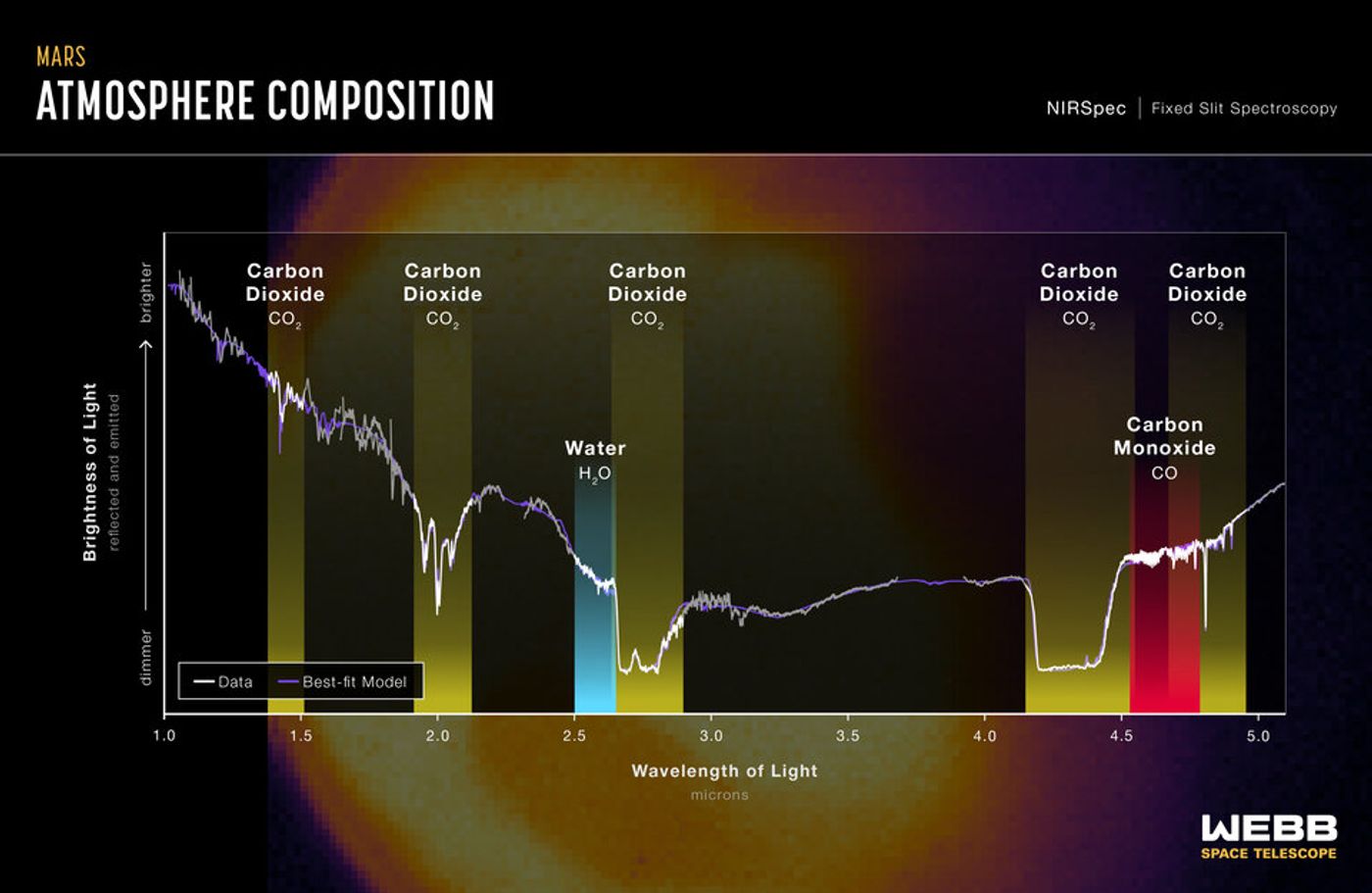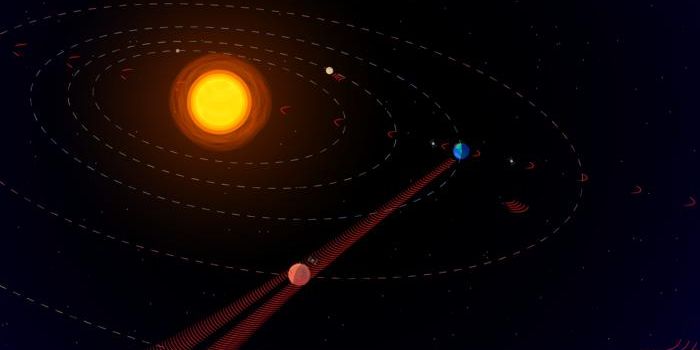James Webb Space Telescope Looks at the Red Planet
NASA just released the first images and spectra of Mars taken by the James Webb Space Telescope (JWST). The data was collected on September 5, 2022 and provides an unprecedented look at Mars given the infrared sensitivity of JWST. This data also complements data being collected by orbiters, rovers, and other telescopes. JWST can image the entire disk of Mars at one time and has the capability to capture images and spectra with the resolution that is needed to study short-term phenomena such as dust storms, weather patterns, seasonal changes, as well as processes that occur at different times in just a single observation (e.g., daytime, sunset, and nighttime).
However, there are some challenges when it comes to observing Mars. Mars is so close, so it is extremely bright. JWST is built to observe extremely faint sources of light, so its instruments are very sensitive. The bright infrared light from Mars is blinding to JWST, and would cause its detectors to saturate. Therefore, astronomers need to use special observing techniques to observe Mars. To account for the brightness, the exposure times for the images must be extremely short. The analysis of the data required some special techniques as well.
The first images of Mars were captured by the Near-Infrared Camera (NIRCam) at both 2.1 microns and 4.3 microns. The images below show regions of the planet’s eastern hemisphere; the two images from JWST are included on the right and a surface reference map from NASA and the Mars Orbiter Laser Altimeter (MOLA) is included on the left, with overlays of the NIRCam instrument fields of view, corresponding to the images. The 2.1 micron image is dominated by reflected sunlight, and reveals surface details similar to the visible light image on the left. The 4.3 micron image shows thermal emission – or light that is given off by the planet as it loses heat – and is related to the temperature of the surface and the atmosphere. The brightest region is therefore where the Sun is almost directly overhead, since it is the warmest. However, temperature is not the only factor that affects the amount of light detected at this wavelength. We can also see how light is being absorbed by carbon dioxide molecules in the atmosphere, the impact of which is most obvious when looking towards Hellas Basin.
The first near-infrared spectrum of Mars captured by JWST was taken with the Near-Infrared Spectrograph (NIRSpec). The spectrum below represents all the light from the planet as a whole. The spectrum itself is dominated by reflected sunlight at wavelengths shorter than 3 microns and thermal emission at longer wavelengths. Analysis of the features of the spectrum give astronomers information about the surface and atmosphere of the planet. The spectrum shows evidence of carbon dioxide, carbon monoxide, and water in the atmosphere of Mars. Information about the abundance of these molecules can be gleaned from the spectrum.
In the future, astronomers will use data from JWST to explore regional differences across Mars, and will search for trace molecular species in the atmosphere, such as methane and hydrogen chloride.
Source: The European Space Agency










